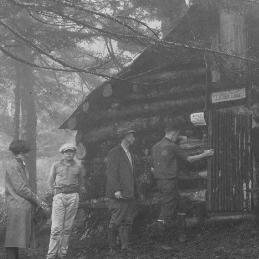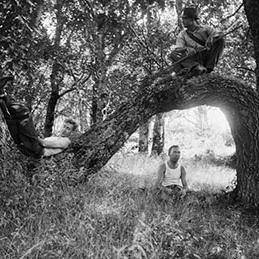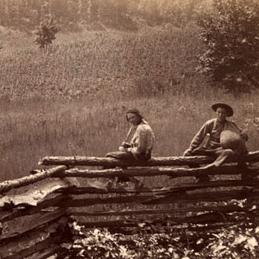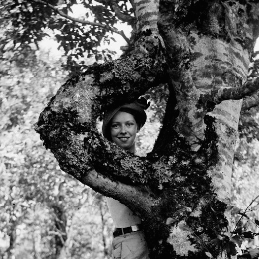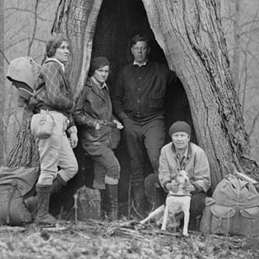Browse
"Mercury Bioaccumulation in Southern Appalachian Birds, Assessed through Feather Concentrations." Ecotoxicology 23, no. 1 (2014).
"Diverse Elevational Diversity Gradients in Great Smoky Mountains National Park, U.S.A." In Data Mining for Global Trends in Mountain Biodiversity, edited by Eva A. Spehn and Christian Korner, 75-87. Boca Raton: CRC Press, 2010.
"Modeling Population Growth of the Ovenbird (Seiuruss Aurocapilla) in the Southern Appalachians." The Auk 124, no. 4 (2007): 1359-1372.
"Time-of-Detection Method for Estimating Abundance from Point-Count Surveys." Auk 124, no. 2 (2007): 653-664.
"Comparison of Breeding Bird and Vegetation Communities in Primary and Secondary Forests of Great Smoky Mountains National Park." Biological Conservation 129 (2006): 302-311.
"Comparing Population Size Estimators for Plethodontid Salamanders." Journal of Herpetology 38, no. 3 (2004): 370-380.
"Estimating Detection Probability Parameters for Plethodon Salamanders Using the Robust Capture-Recapture Design." Journal of Wildlife Management 68, no. 1 (2004): 1-13.
"Estimating Site Occupancy and Species Detection Probability Parameters for Terrestrial Salamanders." Ecological Applications 14, no. 3 (2004): 692-702.
"A Method of Food Supplementation for Ground-Foraging Insectivorous Songbirds." Journal of Field Ornithology 75, no. 3 (2004): 296-302.
"Spatial and Temporal Variation in Detection Probability of Plethodon Salamanders Using the Robust Capture-Recapture Design." Journal of Wildlife Management 68, no. 1 (2004): 14-24.
"Landscape Effects on Breeding Songbird Abundance in Managed Forests." Ecological Applications 12, no. 3 (2002): 836-857.
"A Removal Model for Estimating Detection Probabilities from Point-Count Surveys." Auk 119, no. 2 (2002): 414-425.
"Spatial Autocorrelation and Autoregressive Models in Ecology." Ecological Monographs 72, no. 3 (2002): 445-463.
Distribution of Breeding Birds in Great Smoky Mountains National Park In Zoology, Edited by Theodore R. Simons. Raleigh, NC: North Carolina State University, 2001.
"How Many Baskets? Clutch Sizes that Maximize Annual Fecunity of Multiple-Brooded Birds." The Auk 118, no. 4 (2001): 973-982.
"Sampling Plethodontid Salamanders: Sources of Variability." Journal of Wildlife Management 65, no. 4 (2001): 624-632.
"Evaluating Great Smoky Mountains National Park as a Population Source for the Wood Thrush." Conservation Biology 14, no. 4 (2000): 1133-1144.
Evalution of Salamander Habitat Associations and Population Monitoring Techniques in Great Smoky Mountains National Park In 1999 Annual Report . Raleigh, NC: North Carolina State University, 2000.
"Observations of Wood Thrush Nest Predators in a Large Contiguous Forest." Wilson Bulletin 112, no. 1 (2000): 82-87.
"Validating the Assumptions of the Mayfield Method." Journal of Field Ornithology 71, no. 4 (2000): 658-664.
Assessing the Diversity and Habitat Associations of Salamanders in Great Smoky Mountains National Park In 1998 Annual Report. Raleigh, NC: North Carolina State University, 1999.
"Factors Affecting Nesting Success of Wood Thurshes in Great Smoky Mountains National Park." The Auk 116, no. 3 (1999): 1075-1082.
"A GIS-Based Habitat Model for Wood Thrush, Hylocichla mustelina, in Great Smoky Mountains National Park." In Predicting Species Occurrences: Issues of Accuracy and Scale., 1999.
Ecology and Conservation of Neotropical Migrants in the Southern Appalachians In 1996 Annual Report to the National Park Service. Raleigh, North Carolina: North Carolina State University, 1997.
Characterization of Deciduous Forest Breeding Bird Communities of Great Smoky Mountains National Park Progress Report In Progress Report. Gatlinburg, TN: National Park Service, 1993.





















